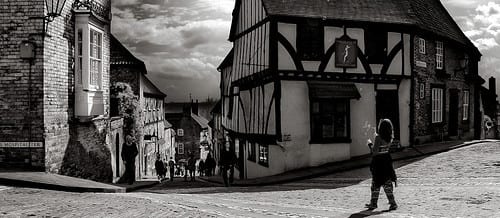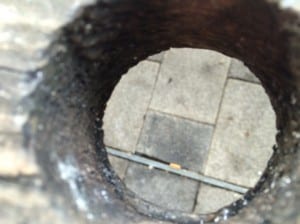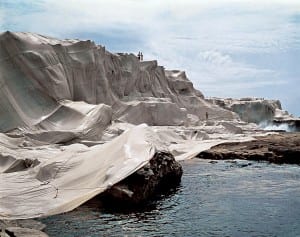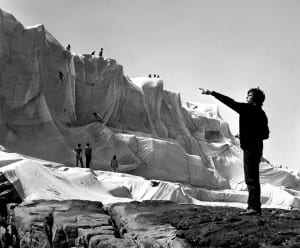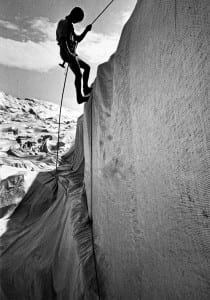An Abyss To Fall In
On Monday 26th January we were set the challenge to perform a subtlemob. We were given a list of instructions and included in this was to find ‘an abyss to fall in’. My interpretation of the caption is the photograph that I captured. An abyss can be perceived as an unknown quantity of space. I believe the photograph also has the power to portray this. The picture captures what is above the hole yet the space or what is behind it is left to our imagination.
Adrian Howells
During Wednesday’s seminar we briefly looked upon Adrian Howells work. Instantly, his work grasped my full, undivided attention. After the session I decided to investigate further into his work to gain a clearer knowledge and understanding of the performance techniques pursued. I discovered that Howells usually worked extremely close with the audience. The performance methods used present the audience making a show of themselves, urging for self-reflection by leaving them to question how they present themselves to the world. The aesthetics of the piece would derive from a personal one to one therapeutic session with the spectator; carefully enabling them to open up. Howells’ practice represents and demonstrates that “theatre is not just something to be consumed but a shared act” (Gardner, 2014) leaving us to appreciate the artistic value as a joint effort on equal parts.
An example of Howells’ most famous work would be Foot-Washing for the Sole, which he performed in multiple places around the world, exploring different cultures.
Link 1 (Foot-Washing for the Sole interview with Adrian): https://www.youtube.com/watch?v=y9PPEbAU5z8
Link 2 (Foot-Washing for the Sole Mini clip): https://www.youtube.com/watch?v=k_a8PDfErtA
Site Specific!
As opposed to Howells’ work Foot-Washing for the Sole which categorizes under site generic work, site specific work is designed and created with one place in mind. Site specific performance links a close relationship between art and site, the particular location is completely necessary for the structure of the piece. “site-specific performance engages with site as symbol, site as story-teller, site as structure” (Pearson, 2010, 8)
After my first week and a half of being introduced to Site Specific performance I now feel more eased into the subject and have grasped more of a clearer understanding of it. I believe that keeping an open mind to the subject will allow me to appreciate the full beauty of it.
Pearson, M (2010) Introduction in Site Specific Performance. Basingstoke: Palgrave Macmillan.
Kilkenny Arts Festival (2010) Adrian Howells Interview | Footwashing For The Sole | Kilkenny Arts Festival. [online video] Available from https://www.youtube.com/watch?v=y9PPEbAU5z8 [Accessed 2 February 2015].
TPAM (2012) TPAM 2010 (15 of 17) Adrian Howells. [online video] Available from: https://www.youtube.com/watch?v=k_a8PDfErtA [Accessed 2 February 2015].
